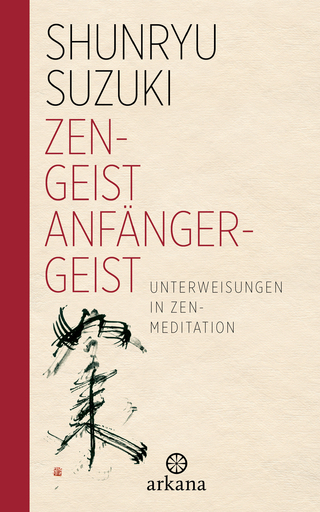
Zen Sanctuary of Purple Robes
State University of New York Press (Verlag)
978-0-7914-6827-2 (ISBN)
Zen Sanctuary of Purple Robes examines the affairs of Rinzai Zen's Tōkeiji Convent, founded in 1285 by nun Kakusan Shidō after the death of her husband, Hōjō Tokimune. It traces the convent's history through seven centuries, including the early nuns' Zen practice; Abbess Yōdō's imperial lineage with nuns in purple robes; Hideyori's seven-year-old daughter—later to become the convent's twentieth abbess, Tenshu—spared by Tokugawa Ieyasu at the Battle for Osaka Castle; Tōkeiji as "divorce temple" during the mid-Edo period and a favorite topic of senryu satirical verse; the convent's gradual decline as a functioning nunnery but its continued survival during the early Meiji persecution of Buddhism; and its current prosperity. The work includes translations, charts, illustrations, bibliographies, and indices. Beyond such historical details, the authors emphasize the convent's "inclusivist" Rinzai Zen practice in tandem with the nearby Engakuji Temple. The rationale for this "inclusivism" is the continuing acceptance of the doctrine of "Skillful Means" (hōben) as expressed in the Lotus Sutra—a notion repudiated or radically reinterpreted by most of the Kamakura reformers. In support of this contention, the authors include a complete translation of the Mirror for Women by Kakusan's contemporary, Mujū Ichien.
Sachiko Kaneko Morrell is retired from her position as East Asian Librarian at Washington University in St. Louis. Robert E. Morrell is Professor Emeritus of Japanese Literature and Buddhism at Washington University in St. Louis and the author of Sand and Pebbles (Shasekishu): The Tales of Muju Ichien, A Voice for Pluralism in Kamakura Buddhism, also published by SUNY Press, and Early Kamakura Buddhism: A Minority Report.
Figures
Preface
Acknowledgments
1. Winds of Doctrine: The World of Thought and Feeling in Late Kamakura Japan
2. Mujū Ichien’s Mirror for Women (Tsuma kagami, 1300): A Buddhist Vernacular Tract of the Late Kamakura Period
3. Abbess Kakusan and the Kamakura Hōjō
4. Princess Yōdō’s Purple-clad Nuns
5. From Sanctuary to Divorce Temple: Abbess Tenshū and the Later Kitsuregawa Administrators
6. Everyday Life at Matèsugaoka Tōkeiji : Sacred and Secular
7. The “Divorce Temple” in Edo Satirical Verse
8. Meiji through Heisei: Tōkeiji and Rinzai Zen Continuity
Appendixes
Chart A.Zen Lineage from Śākyamuni to the Tōkeiji
Chart B.Kakusan’s Relationship to the Hōjō and Adachi Families
Chart C.From Ashikaga to the Kitsuregawa Administrators
Chart D.Relationships in the Tōkeiji Succession during the Late Muromachi and Early Edo Periods
Chart E.Tōkeiji Head Abbesses and Acting Abbesses
Notes
Annotated Cross-Referenced Index to Major Cited Texts
Bibliography
Index
| Erscheint lt. Verlag | 10.7.2006 |
|---|---|
| Zusatzinfo | Total Illustrations: 0 |
| Verlagsort | Albany, NY |
| Sprache | englisch |
| Maße | 152 x 229 mm |
| Gewicht | 490 g |
| Themenwelt | Geisteswissenschaften ► Religion / Theologie ► Buddhismus |
| ISBN-10 | 0-7914-6827-5 / 0791468275 |
| ISBN-13 | 978-0-7914-6827-2 / 9780791468272 |
| Zustand | Neuware |
| Haben Sie eine Frage zum Produkt? |
aus dem Bereich


